
Get upto 50% off in New Year Offer

Get upto 50% off in New Year Offer

In this article, we’ll explore the concept of conversational marketing, its importance in modern business, and the impact it has on customer engagement and satisfaction. Benefit from Real-time customer engagement.
In today’s fast-paced digital world, traditional marketing strategies are evolving at a rapid pace. Customers are no longer passive consumers; they expect personalized and real-time interactions with brands. Conversational marketing has emerged as a powerful approach to meet these demands. Engage in effective Personalization in marketing.

Conversational marketing is a customer-centric approach that leverages real-time, one-to-one connections between businesses and their customers. It’s a paradigm shift from traditional, one-way marketing techniques, focusing on personalized, dynamic, and engaging interactions.
In today’s fast-paced digital landscape, businesses are constantly seeking new ways to engage with their customers. Traditional marketing approaches, often one-directional and impersonal, are giving way to a more interactive and customer-centric model known as conversational marketing. This paradigm shift emphasizes the power of real-time, personalized, and dynamic interactions, fostering a sense of connection and satisfaction among customers.

Conversational marketing thrives on personalization. It allows businesses to create tailored experiences for their customers, making them feel understood and valued. By collecting and leveraging customer data, companies can provide highly relevant and timely responses, product recommendations, and content. This level of personalization not only increases engagement but also drives customer loyalty, as individuals are more likely to return to brands that make them feel special.
One of the key drivers of conversational marketing’s importance is the expectation of immediate responses in today’s fast-paced world. According to statistics, 82% of consumers expect businesses to provide instant answers to their questions. By using chatbots, live chat software, or messaging apps, companies can offer real-time interactions and support, which not only meet customer demands but also significantly improve the overall customer experience. Customers are more likely to be satisfied when they can get the information they need quickly. Be well equipped with conversational marketing.
Another vital aspect of conversational marketing is its adaptability to multiple communication channels. In today’s digital age, customers are spread across various platforms, from websites and social media to email and messaging apps. To stay connected and provide consistent service, businesses must be available on these platforms. By being present where their customers are, companies can maximize their reach and effectiveness, ensuring that no customer is left unattended.
Automation plays a pivotal role in conversational marketing. AI-powered chatbots and virtual assistants are capable of handling routine inquiries, guiding customers through product selections, and even scheduling appointments. By automating these tasks, businesses can reduce the need for extensive customer support teams, thereby cutting operational costs. The efficiency and scalability that automation offers are crucial in modern business.
At its core, conversational marketing is designed to enhance the customer experience. Providing personalized, real-time responses not only meets customers’ immediate needs but also contributes to their long-term satisfaction. A satisfied customer is more likely to become a loyal one, advocating for the brand and returning for future purchases. This enhanced customer experience is an invaluable asset for businesses striving to build strong and lasting relationships with their audience.

Campaign Management becomes seamless as ManagePlus allows you to group different campaign materials together. This feature ensures that you stay active on all fronts, from Demand Generation to HR Support, and enables easy tracking through content grouping and campaign-based reports.
Conversational marketing isn’t just about engaging customers; it’s also about guiding them through the buying process. By offering immediate assistance, recommendations, and support, businesses can reduce abandonment rates and increase conversion rates. Customers are more likely to make a purchase when they feel supported and informed throughout their journey. As a result, conversational marketing directly contributes to a company’s bottom line.
The success of conversational marketing is not just theoretical; it’s quantifiable. Metrics like response time, conversion rates, and customer satisfaction can be measured and analyzed to assess the effectiveness of a conversational marketing strategy. By continually monitoring and gathering data, businesses can refine their approach, improve engagement, and adapt to changing customer preferences. Task Management is optimized for marketing pipelines, offering auto assignment rules, task grouping based on roles, default user settings, and task reminders. Unlike general project management tools, ManagePlus provides insights into the performance of completed tasks, ensuring a more informed workflow.

In an age where customers are overwhelmed by information and choices, engaging them is a challenge. Here are three compelling statistics that highlight the significance of conversational marketing:
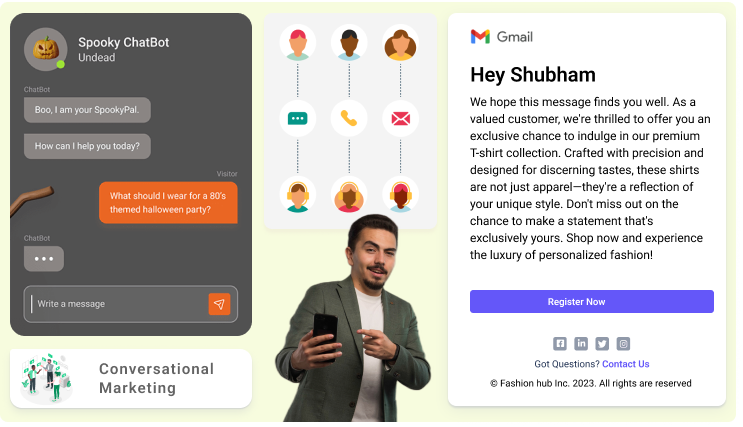
Conversational marketing involves several key components that make it effective:
It enables businesses to engage with customers in real-time through chat, messaging apps, or chatbots, delivering immediate answers to inquiries.
Conversational marketing tools allow businesses to collect customer data and tailor responses and recommendations to individual preferences.
Brands can reach customers on various platforms, from websites and social media to email and messaging apps, ensuring a seamless and consistent experience.
Conversational marketing often employs chatbots and AI to handle routine inquiries and direct customers to the right information or human support.

The adoption of conversational marketing offers numerous advantages:
By providing instant, personalized assistance, businesses can enhance the overall customer experience, leading to increased customer satisfaction and loyalty.
Conversational marketing tools guide customers through the buying process, reducing abandonment rates and increasing conversion rates.
Automation reduces the need for extensive customer support teams, saving costs in the long run.
To implement conversational marketing effectively, businesses need the right tools and technologies. Some popular options include:
AI-driven chatbots can handle common inquiries, provide product recommendations, and even schedule appointments. Examples are as follows
Empowers businesses with AI-driven chatbots capable of understanding and responding to complex user queries.
Leverages natural language processing to create intelligent chatbots for dynamic conversations.
A user-friendly platform enabling businesses to build AI-driven chatbots on Facebook Messenger for customer interactions.

Offers a robust framework for developing intelligent bots with machine learning capabilities.
Simplifies chatbot creation for marketing on platforms like Facebook, providing automation for common tasks and responses.
These tools enable real-time interactions between customers and support agents, improving customer service. Examples are as follows:
Comprehensive solution with real-time chat, automation, and seamless integration with support tools.
Unified customer communication platform with live chat, automated messaging, and CRM integration.
Focus on conversational marketing, AI-powered chatbots, and lead generation capabilities.
User-friendly interface, customizable widgets, and integration with CRM and helpdesk tools.
Free plan available, simple setup, and integration options with various content management systems.
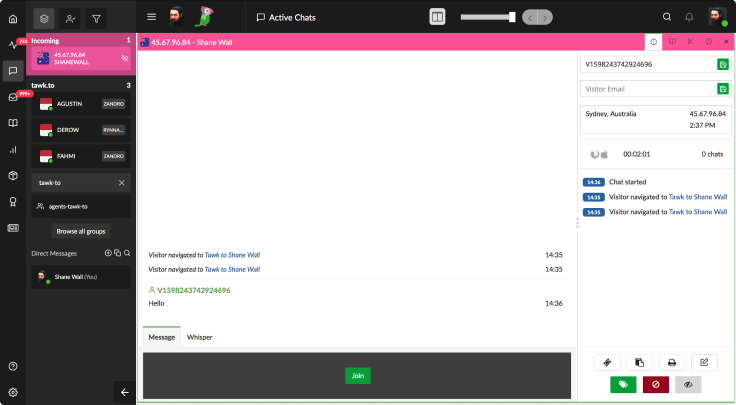
Platforms like Facebook Messenger and WhatsApp are increasingly used for business communications, offering convenient channels for engagement. Examples are as follows
Enables businesses to communicate with customers via text, multimedia messages, and automated responses.
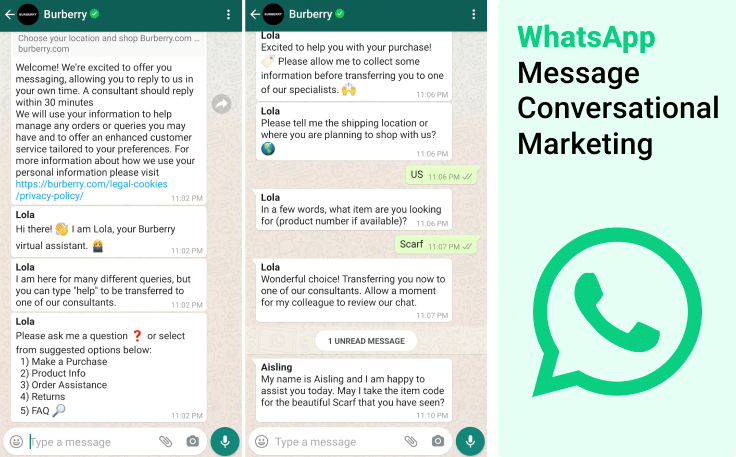
Facilitates customer interactions through chat, providing a platform for inquiries and support.
Popular in Asia, it combines messaging with social media, e-commerce, and payment functionalities.
Offers secure messaging and chatbot integration, suitable for various business communication needs.
Allows businesses to engage with customers through Viber, utilizing multimedia messaging and chat features.
Successfully implementing conversational marketing strategies involves several steps:
Gather customer data to personalize interactions and understand their needs and preferences.
Craft engaging and informative content for conversations, including automated responses and chatbot scripts.
Ensure your team is trained to use conversational tools, and integrate these tools with your existing systems and platforms.
Continuously monitor conversations and gather data to refine your approach and improve engagement. Examples are as follows:
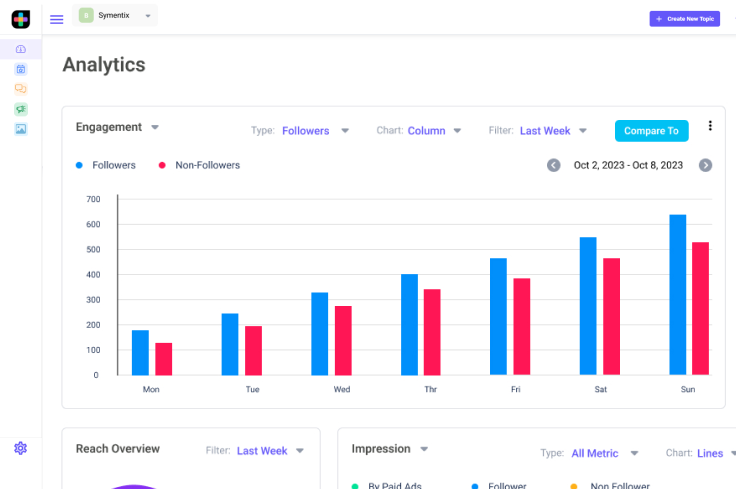
Provides in-depth insights into website interactions, including user behavior on live chat and conversion tracking.
Offers behavior analytics, heatmaps, and user feedback to understand how visitors interact with chat features.
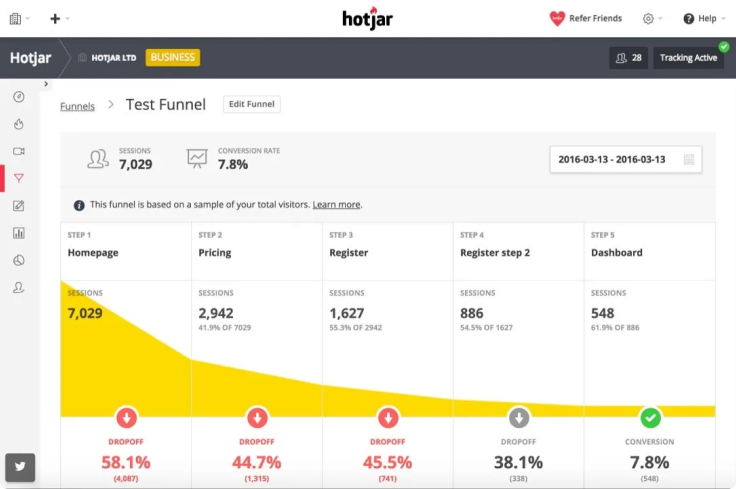
Monitors and analyzes customer interactions, helping businesses refine their support strategies.
Provides detailed analytics on conversation trends, response times, and customer satisfaction for optimization.
Tracks live chat engagement, customer interactions, and conversion metrics to inform marketing and support decisions.
![]()
Several companies have embraced conversational marketing with remarkable results. For instance, clothing retailer H&M implemented a chatbot on its website, which helped customers find the perfect outfits and increased online sales. Similarly, Sephora’s chatbot offers beauty tips, product recommendations, and appointment bookings, enhancing the shopping experience for their customers.

The Idea Repository feature with ManagePlus helps you capture marketing inspirations at any time, keeping them organized on an actionable board. Users can discuss ideas, present them to stakeholders for review, and enhance clarity by adding notes, attachments, and references.
Scheduling & Publishing is streamlined, allowing users to seamlessly publish or schedule content directly from the task management board. This eliminates the need for navigating between different tools for content management and scheduling, enhancing overall efficiency.
Measuring the success of conversational marketing can be achieved through various metrics:

Analyzing how quickly your team or chatbots respond to customer inquiries is crucial for evaluating efficiency.
Tracking how many conversations lead to desired actions, such as purchases or bookings, is a key indicator of success.
Collecting feedback and reviews from customers can provide insights into their level of satisfaction.

The future of conversational marketing is promising. As AI and machine learning technologies continue to advance, chatbots and virtual assistants will become even more sophisticated, providing more accurate and personalized responses. Furthermore, as consumers increasingly prefer messaging apps for communication, businesses will need to adapt their strategies accordingly. The integration of augmented reality (AR) and virtual reality (VR) in conversational marketing is also on the horizon, promising even more immersive and interactive customer experiences. Benefit from Real-time customer engagement. Engage in effective Personalization in marketing.
In conclusion, if your business has not yet embraced conversational marketing, now is the time to start. It’s not just a trend; it’s a fundamental shift in the way brands connect with their customers, and it’s here to stay. With the right tools, strategies, and a commitment to putting the customer first, your business can harness the power of conversational marketing to drive growth and build lasting relationships with your audience.
By prioritizing personalization, real-time engagement, multichannel communication, automation, and enhanced customer experience, companies can drive customer satisfaction, increase loyalty, and boost conversion rates. In a world where customers demand immediate and personalized responses, conversational marketing is not just important; it’s essential for businesses aiming to thrive in the digital age. It’s time to embrace the power of conversation and start reaping the benefits it offers.

Streamline your marketing efforts with AI-powered working design — Organize, collaborate, and optimize your marketing campaigns all in one place!

Join now to shape the future of MangePlus
Don’t miss out
Content Writing | SEO | SEM